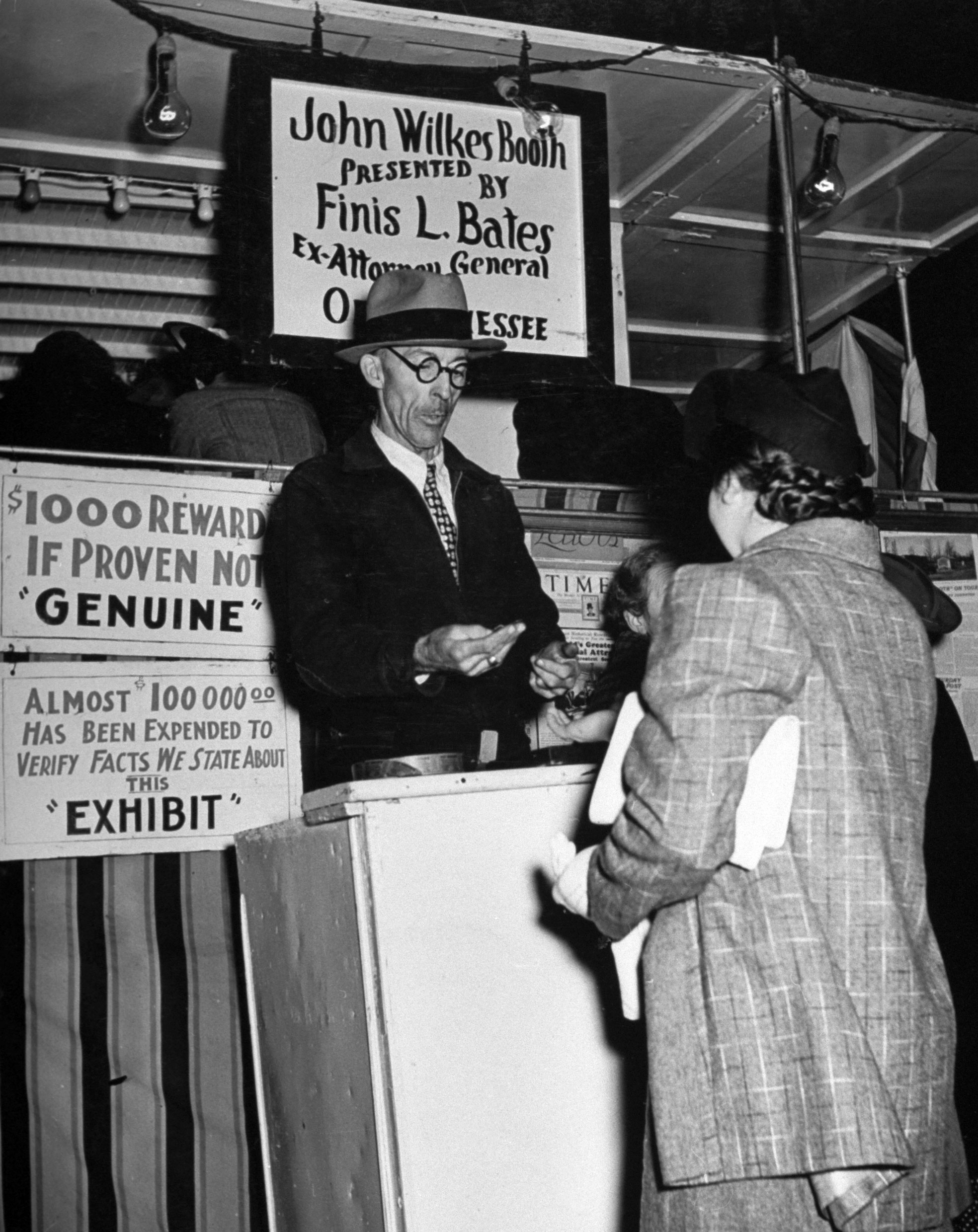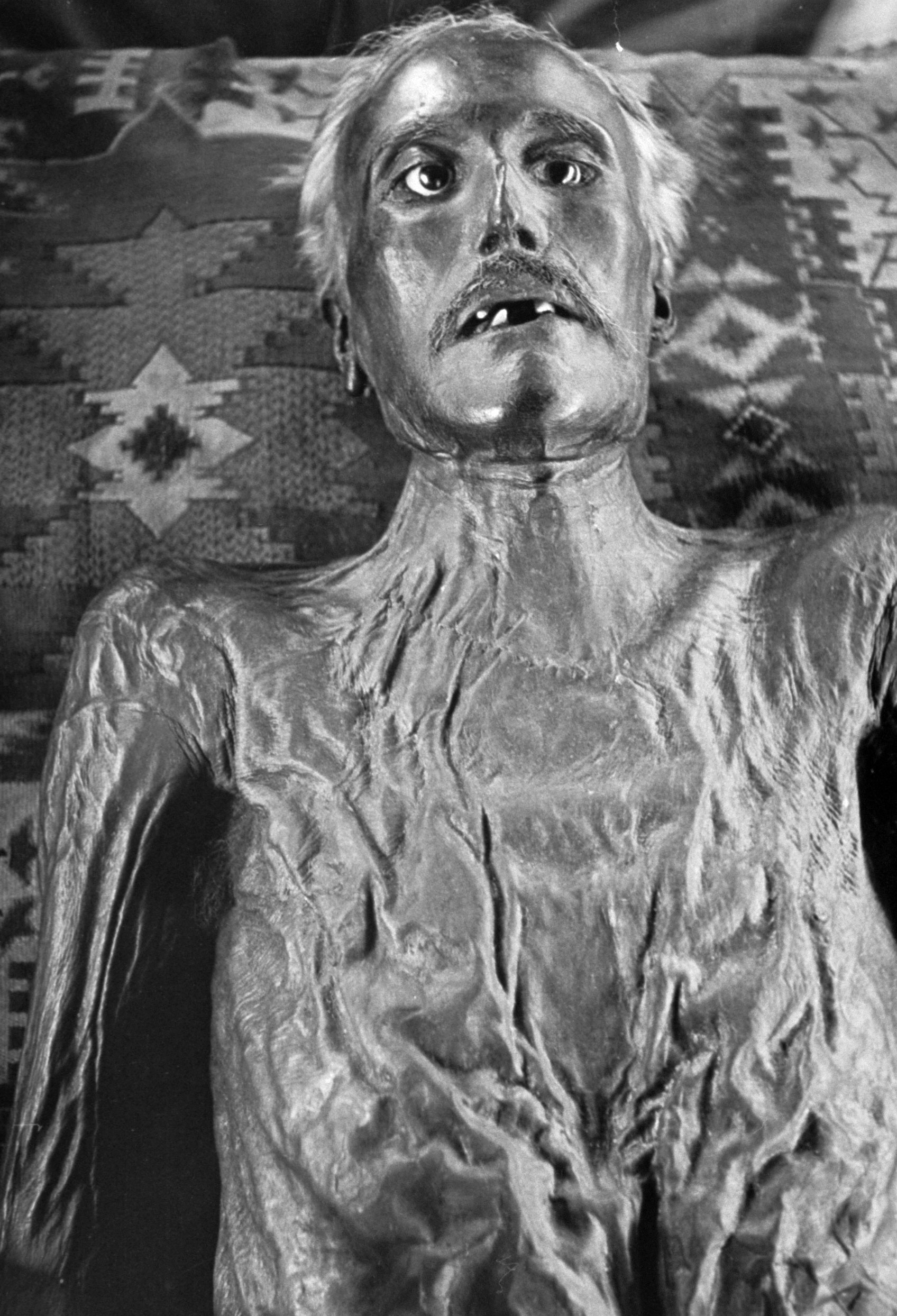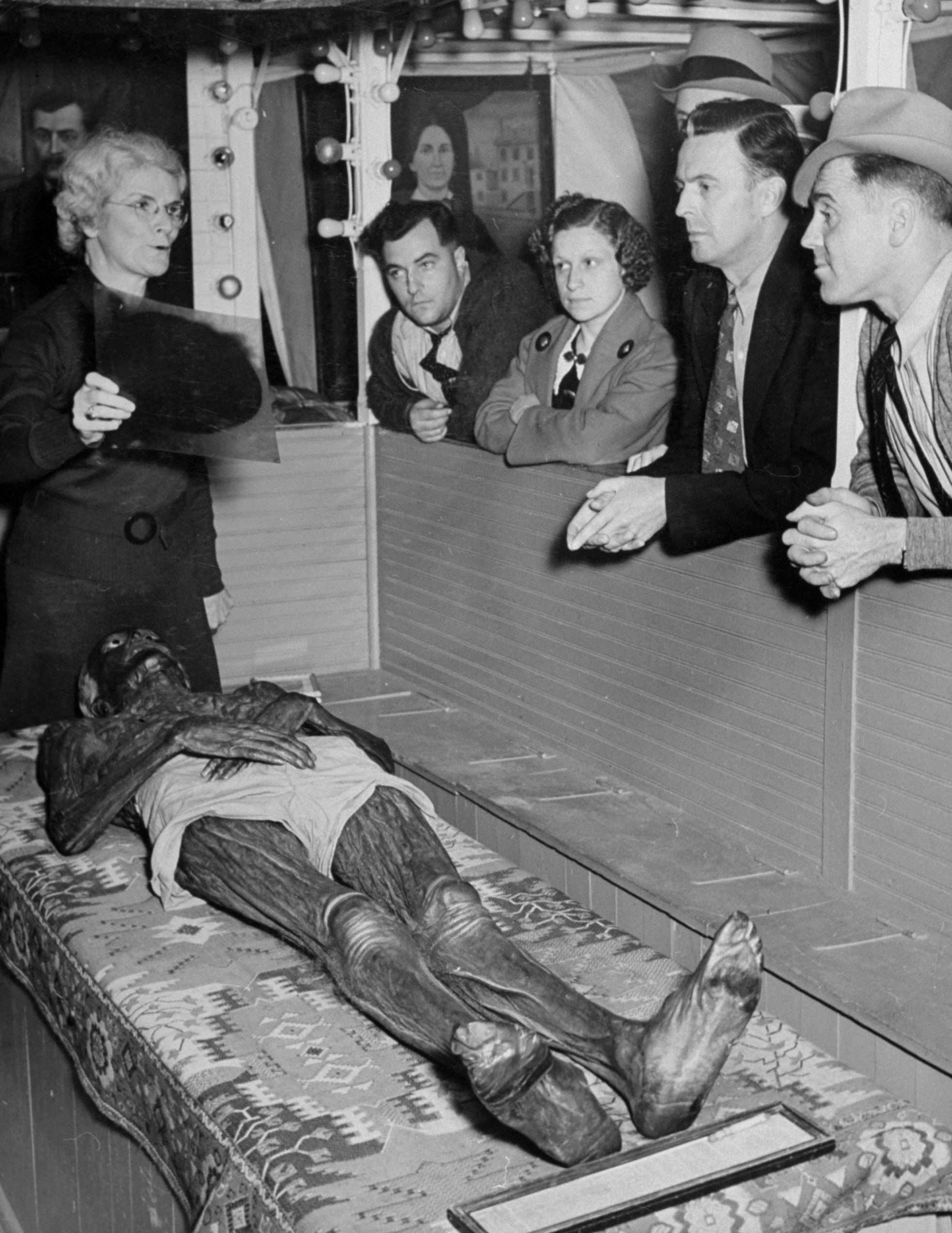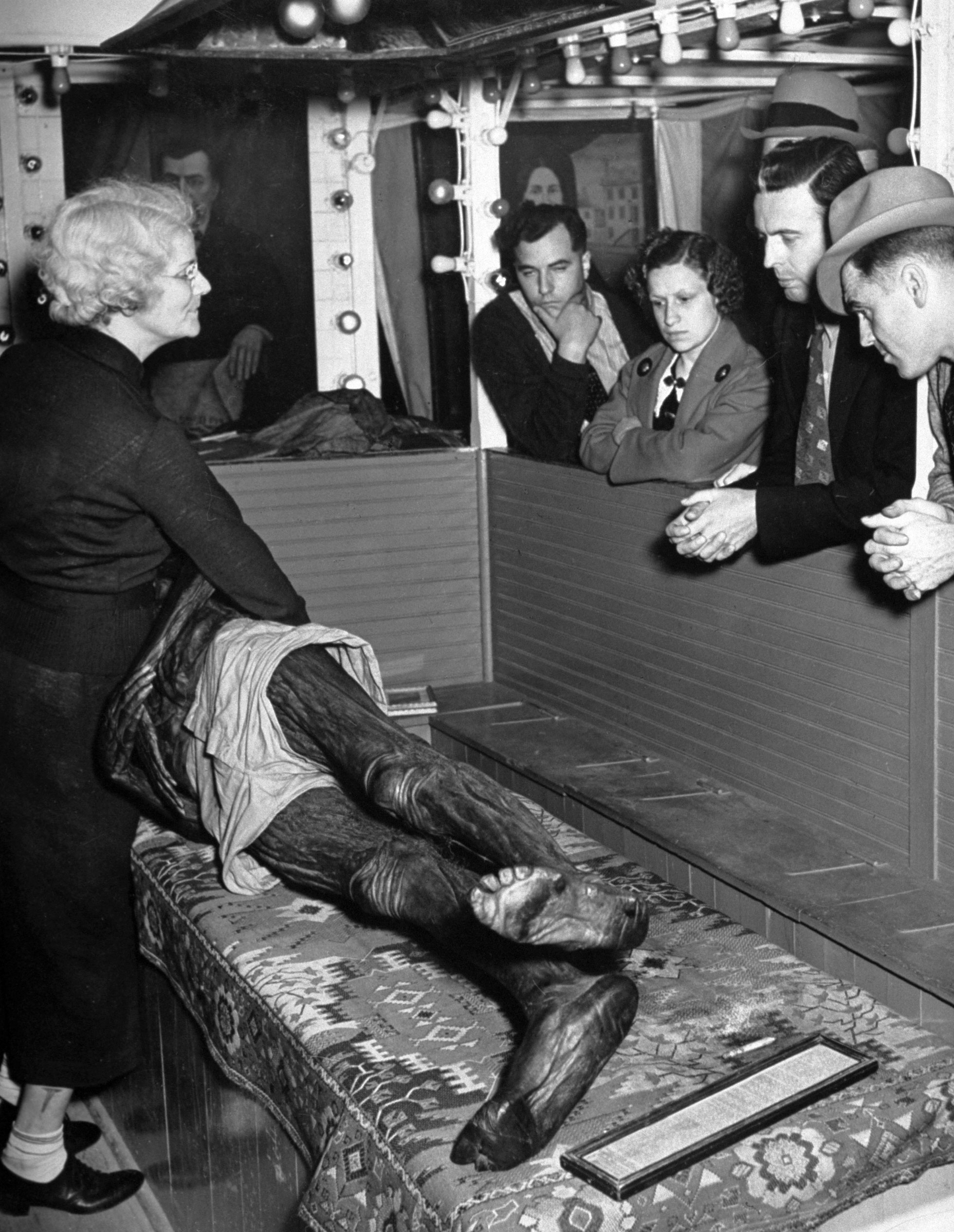
Twelve days after John Wilkes Booth assassinated Abraham Lincoln on April 14, 1865, he was fatally shot by an army sergeant as the barn he was hiding in burned to the ground. Or at least that’s the conventional narrative of Booth’s final hours.
Despite the fact that Booth’s body had been identified by a number of people who knew him well, some conspiracy theorists maintained that Booth escaped to Texas, and that the man shot outside that barn had merely been a look-alike. In Finis L. Bates’ 1907 book Escape and Suicide of John Wilkes Booth, the author contends that Booth assumed a new identity, John St. Helen, and lived in exile until taking his own life in 1903.
Following the success of his book, Bates began to display the mummified cadaver he claimed was Booth’s at traveling carnivals. According to LIFE, the mummy, which was for some reason “always clad in khaki shorts,” changed hands several times, “bringing bad luck to its owners.” By the time LIFE photographed it at Jay Gould’s “Million Dollar Spectacle” in 1938, both doctors and historians had weighed in on the matter:
In 1931 a group of doctors examined the corpse and found that it had certain marks which Booth had: short left leg, distorted right thumb, scar on neck. But these findings did not convince historians, who generally pooh-pooh the story, agree that this mummy is not and never was the body of John Wilkes Booth.
Though the public lost interest for a few decades, a 1977 book and subsequent movie adaptation, both called The Lincoln Conspiracy, thrust the controversy back into the mainstream. The book and film offered new theories about Booth’s alleged escape, chief among them an elaborate cover-up of a plot to kidnap and ultimately remove Lincoln from the presidency.
Historians and Booth descendants have attempted to obtain permission to exhume Booth’s corpse for DNA testing, but all requests so far have been denied.









More Must-Reads from TIME
- Cybersecurity Experts Are Sounding the Alarm on DOGE
- Meet the 2025 Women of the Year
- The Harsh Truth About Disability Inclusion
- Why Do More Young Adults Have Cancer?
- Colman Domingo Leads With Radical Love
- How to Get Better at Doing Things Alone
- Michelle Zauner Stares Down the Darkness
Write to Eliza Berman at eliza.berman@time.com